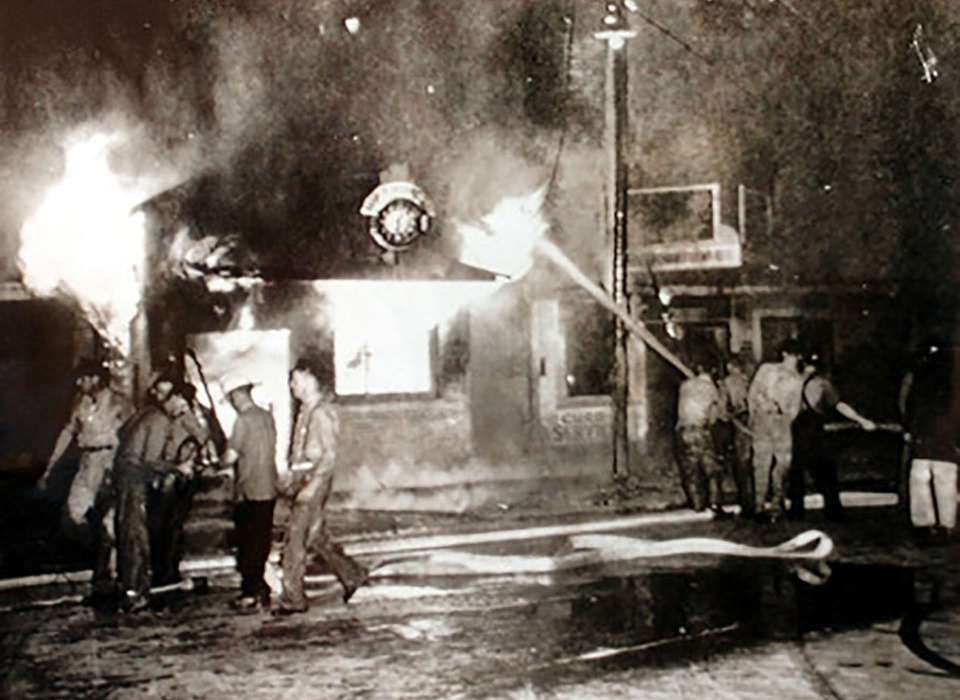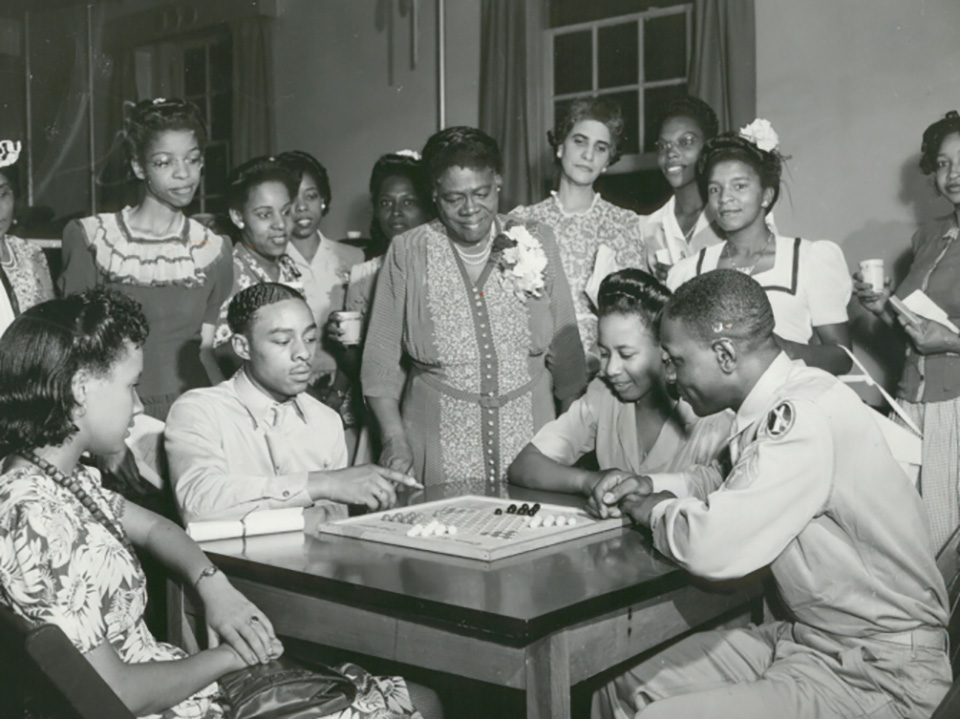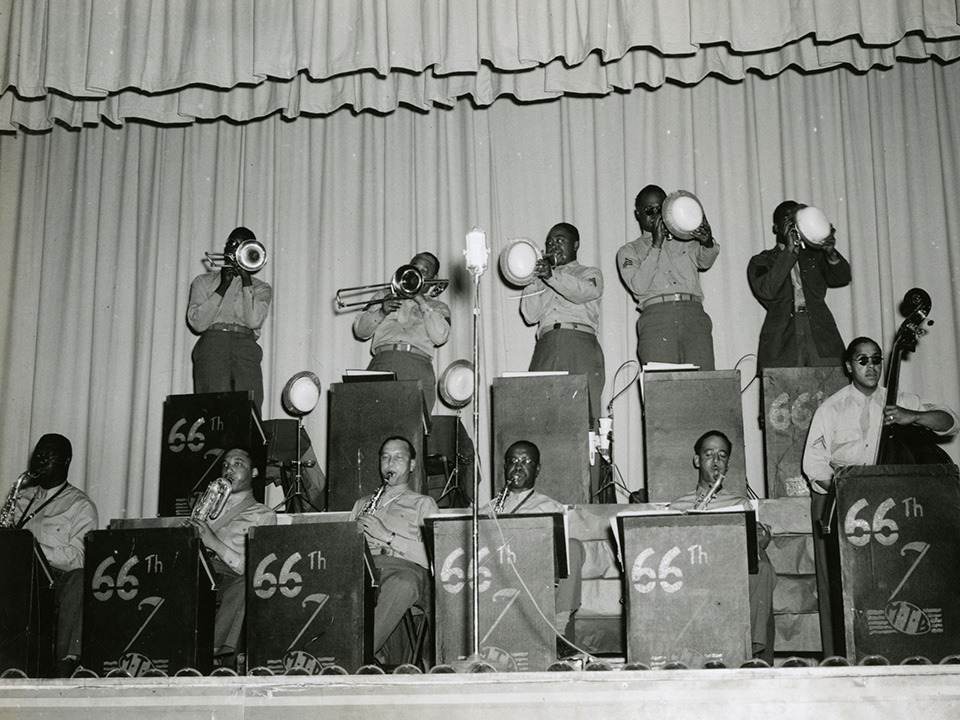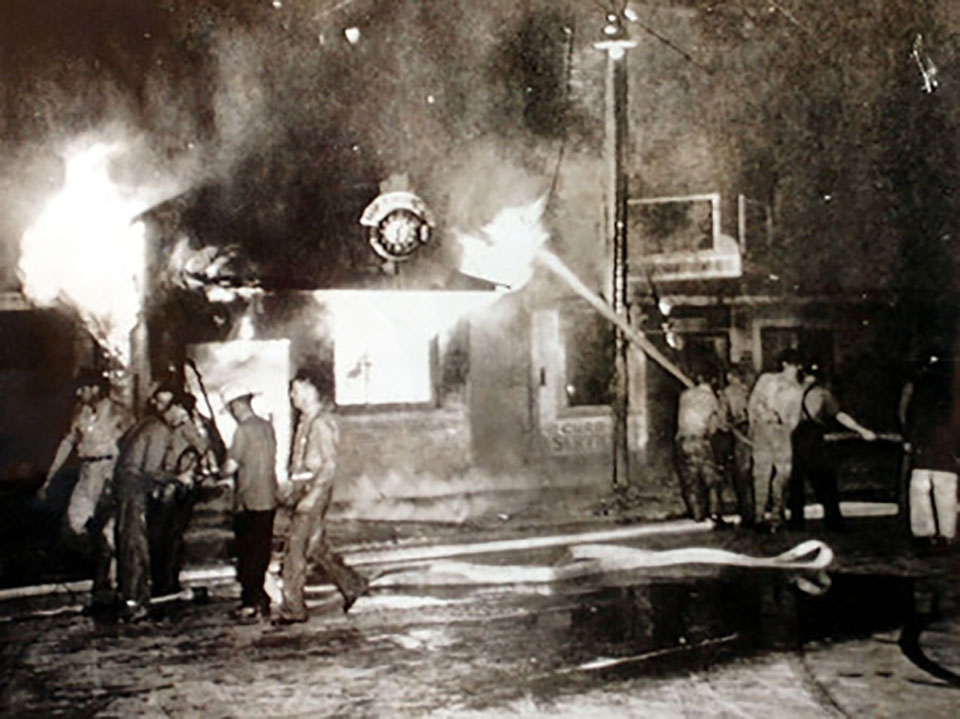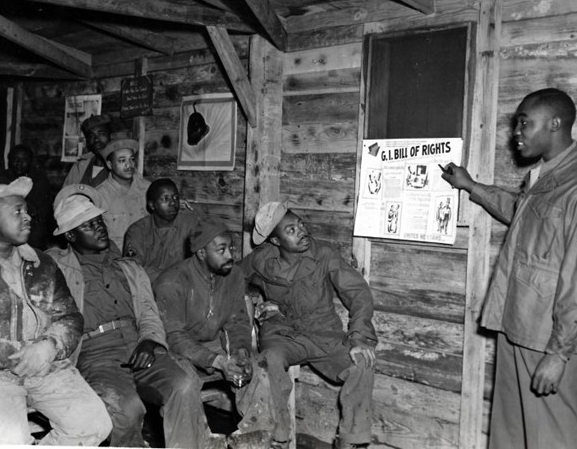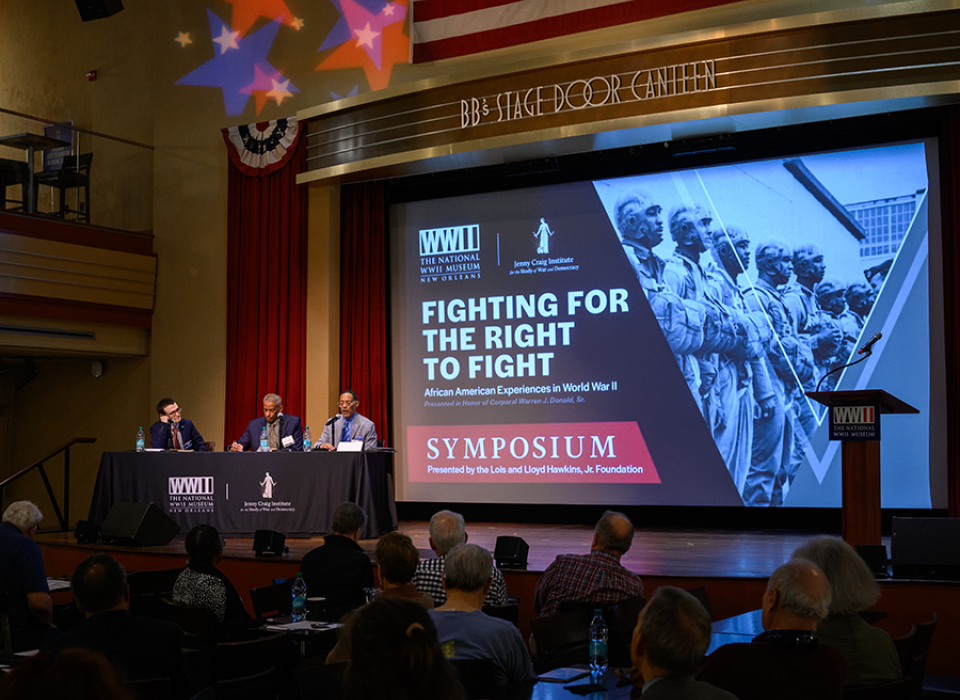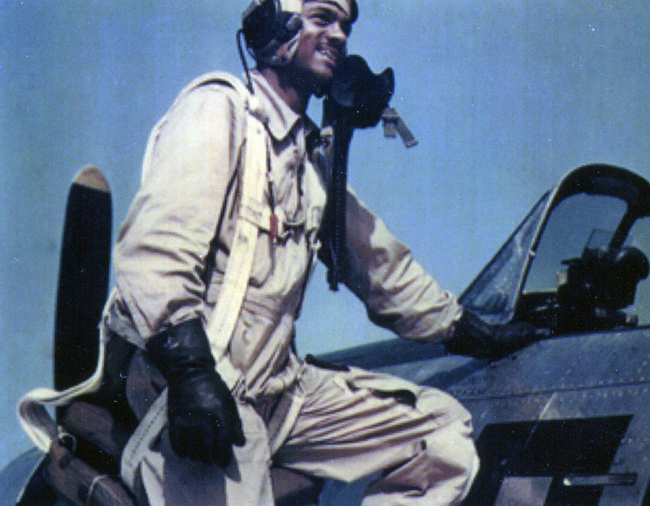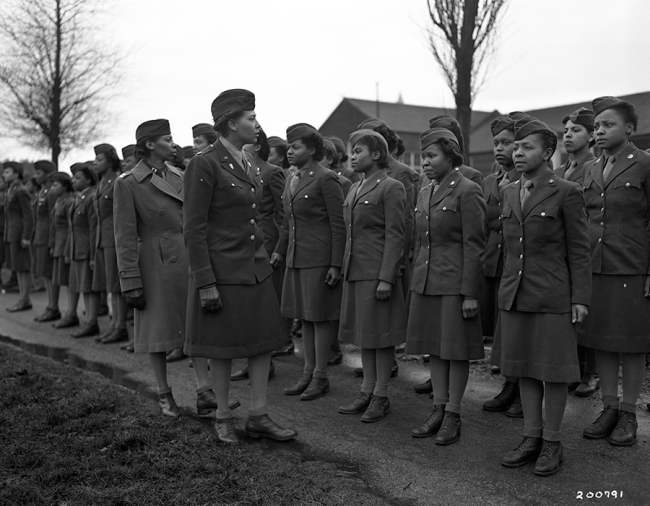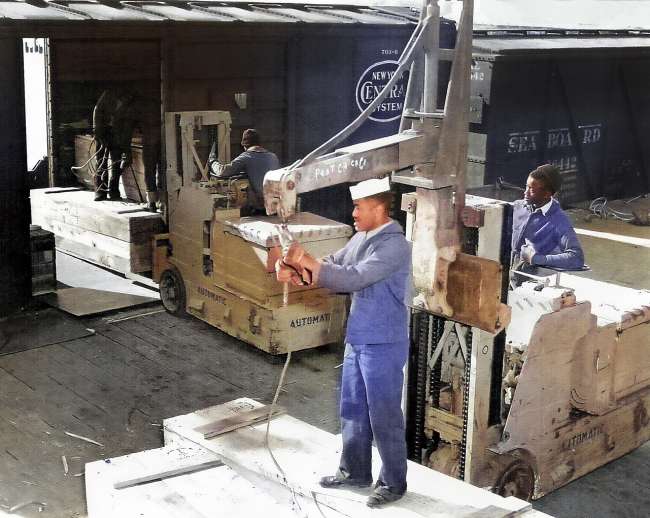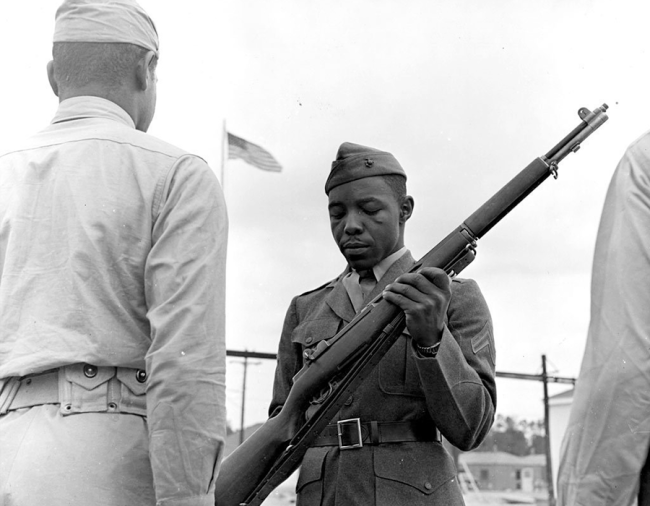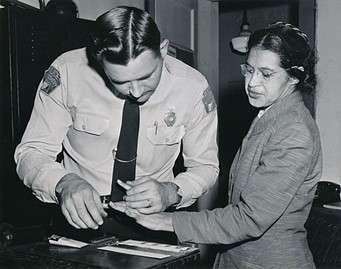On June 19, 1865, over two years after the Emancipation Proclamation freed the enslaved, freedom was officially announced in Texas. The commemoration of this date for future years would become known as Juneteenth. Until after World War II, the celebration of emancipation on Juneteenth was mostly confined to Texas, Oklahoma, and Louisiana. However, word about the celebrations spread throughout the United States during World War II as Black citizens sought freedom at home—the same freedom they were fighting for abroad.
Reports from Texas related to Juneteenth celebrations often appeared in The Pittsburgh Courier—the largest Black newspaper in the United States during World War II. This newspaper, published weekly on Saturday, also served as the main source of information for the Double V campaign, a precursor to the Civil Rights Movement. In particular, the reports from the summer of 1943, a mix of jubilant celebrations and cancellations out of fear for safety, provide a striking insight into Juneteenth and the struggle for equality that Black Americans faced during the war.
An article entitled “Servicemen are Feted at Celebration” appeared in the July 1, 1943 edition of The Pittsburgh Courier and provides a glimpse of how Juneteenth was commemorated by Black servicemembers in Texas. In a week-long celebration at the end of June, 21 USO clubs throughout the Lone Star State held activities that ranged from dances to dinners, and even athletic tournaments. Hundreds of servicemen attended the celebration, with “attractive hostesses from many sections of the state” who helped entertain them.
In El Paso, home to Fort Bliss where anti-aircraft units trained, Black civilians, veterans, and servicemembers came together to celebrate Juneteenth with a day packed full of activities. As printed in the June 5, 1943 edition of The Pittsburgh Courier, Col. Louis A. Carter, Post 502 of the Colored World War Veterans of El Paso, placed an announcement of their festivities: a marathon, a picnic, and a baseball game.
The El Paso Juneteenth celebration commenced with their then 9th annual El Paso’s Emancipation Marathon, which was open to any interested athlete. In order to demonstrate their support of the war effort, the top three runners received War Bond prizes in the amount of $100 for 1st place, $50 for 2nd place, and $25 for 3rd place. Following the marathon, participants were encouraged to head over to their local community center for picnicking, which historically has been a popular activity for the Black community to celebrate Juneteenth. For the closing event to El Paso’s Juneteenth festivities, they held an Emancipation baseball game. Before 1943, the best of El Paso’s Black baseball players competed against Black CCC (Civilian Conservation Corps) workers. However, in 1943, they decided to shake things up and compete against Black servicemembers who were stationed at nearby Fort Bliss.
One section of a thirteen piece African American military band at the Abilene, Texas Air Force Base in 1944. The National WWII Museum, Gift of Mrs. Esther Solar, 2009.353.003.
In the June 26, 1943 edition of The Pittsburgh Courier, a report originally from June 21 in Beaumont, Texas, entitled “Thousands Flee Beaumont,” painted a much different Juneteenth picture than what was experienced 830 miles away in El Paso. On June 15, 1943, what eventually would become known as Black Tuesday, is when chaos erupted in Beaumont, a city that was experiencing an economic boom during World War II due to the shift to wartime production at its shipyard. Two days of rioting began after a story of “a white woman, the mother of three children, [had] been attacked by a young Negro shipyard worker” spread like wildfire throughout the town with accusations of rape. Adding to the racial tension was the fact that a Ku Klux Klan convention had been scheduled to coincide with local Juneteenth celebrations.
Firefighters and Texas State Guard troops fight a fire in downtown Beaumont at an establishment set ablaze during the 1943 race riot. Courtesy of The Beaumont Enterprise.
The story of an attack was unfounded, and the Beaumont police chief even made a statement during the riot to try to quell the violence that no evidence of rape was found after a medical examination, and that the woman was not able to identify any of suspects that were picked up and held for questioning. Despite this revelation, by the evening of Black Tuesday, there were over 10,000 White men who rioted throughout the town and destroyed Black businesses and burned homes while beating the occupants. The rioting would continue through Bloody Wednesday and finally end on Thursday, June 17, after martial law was declared. Overall, the riots resulted in two deaths, many injuries, and “appalling property damage in the Negro district.” However, it also resulted in the cancellation of Juneteenth festivities as thousands of Black residents of Beaumont fled in fear for their safety. Those who remained were instructed to keep to themselves as “defiant whites are continuing to make threats, indicating that as soon as possible, they will take up where they left off on Wednesday.”
What started in Beaumont, during a time that Black communities celebrated their emancipation, would spread throughout the summer of 1943 to other cities throughout the United States with bloody riots as a result of growing racial tensions. June 19, 1943 marked the 79th anniversary of the proclamation of freedom in Texas to the enslaved and showed that there was still much work left to do. While many Black communities commemorated Juneteenth with celebrations and festivities like in El Paso and Texas’ USOs, the events in Beaumont demonstrated tangibly that the struggle for equality and freedom was far from over.
Maggie Hartley, EdD
Maggie Hartley is the Assistant Director of Public Engagement at The National WWII Museum. She holds a Masters of Art in History from Liberty University and is currently pursuing a degree in Doctor of Education in Leadership through Virginia Commonwealth University.
Cite this article:
MLA Citation:
APA Citation:
Chicago Style Citation:
